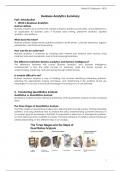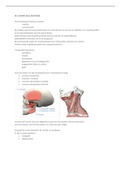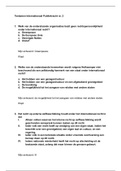Samenvatting
Thomas More - IBT - Business Analytics Summary
- Instelling
- Thomas More Hogeschool (tmhs)
Business Analytics Summary - Chapter 1 - 4 Course: Business Analytics Lecturer: Labuga Marie College: Thomas More Phase 1 - International Business and trade Copyright warning: Reproduction and distribution of this document without the written permission of the author is prohibited.
[Meer zien]






